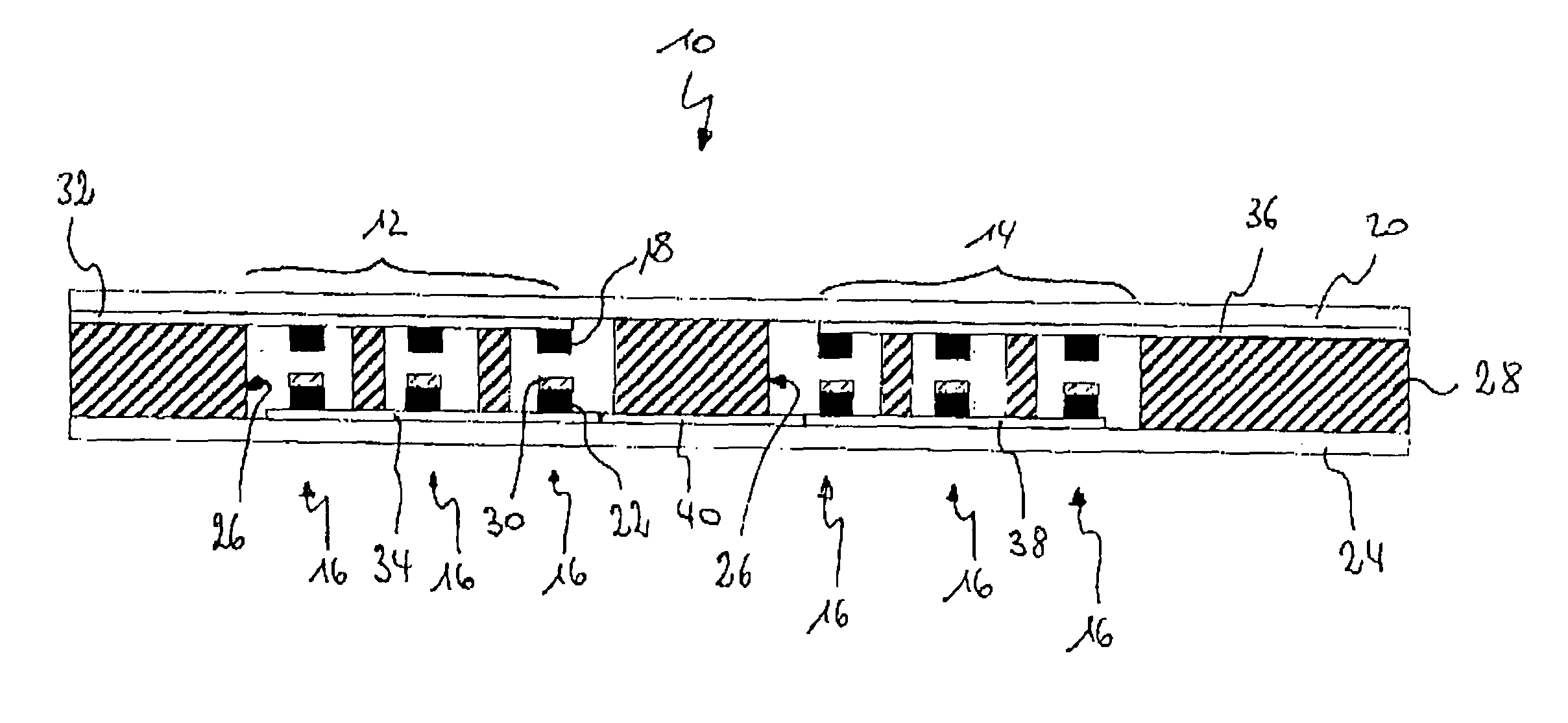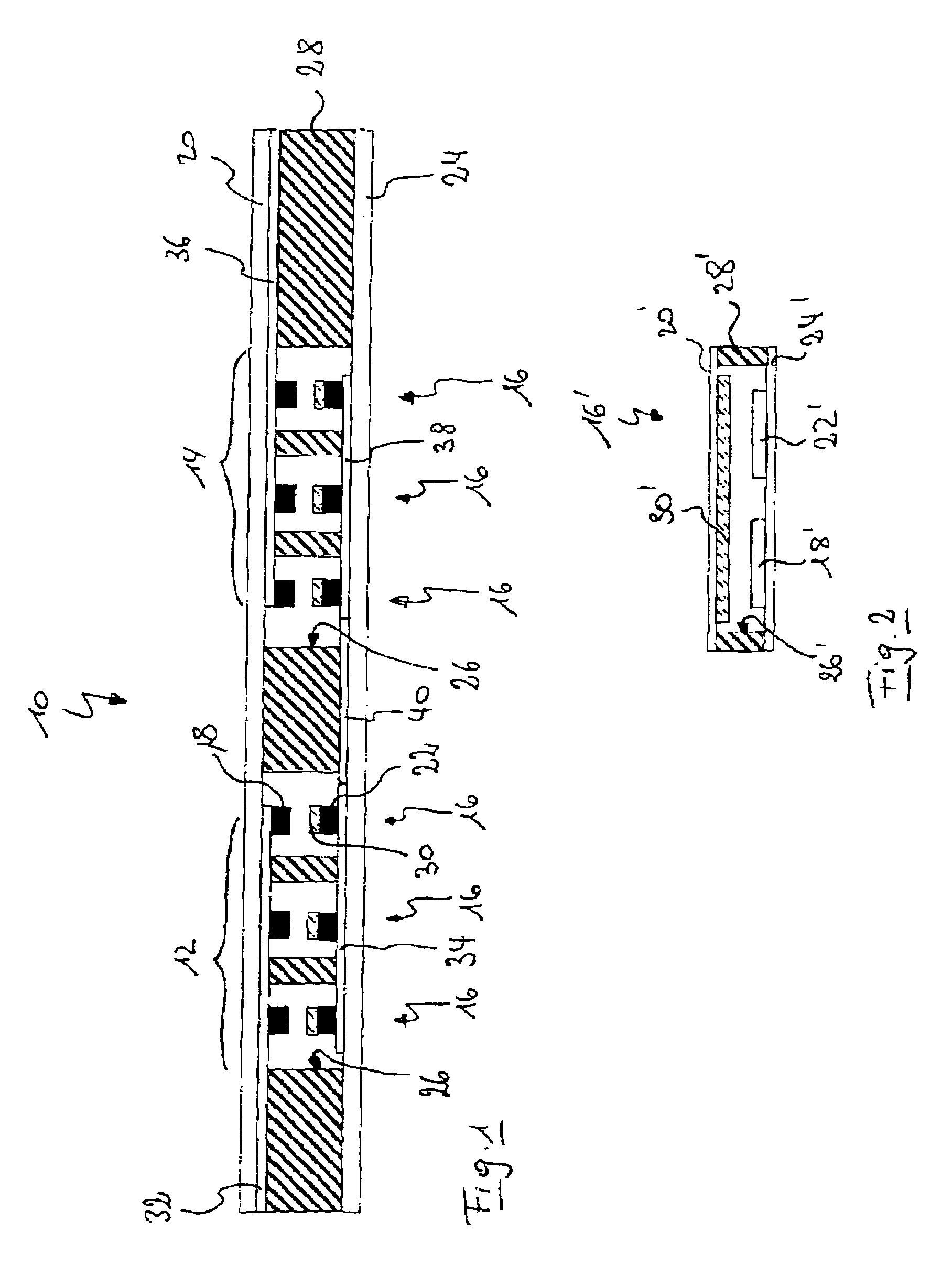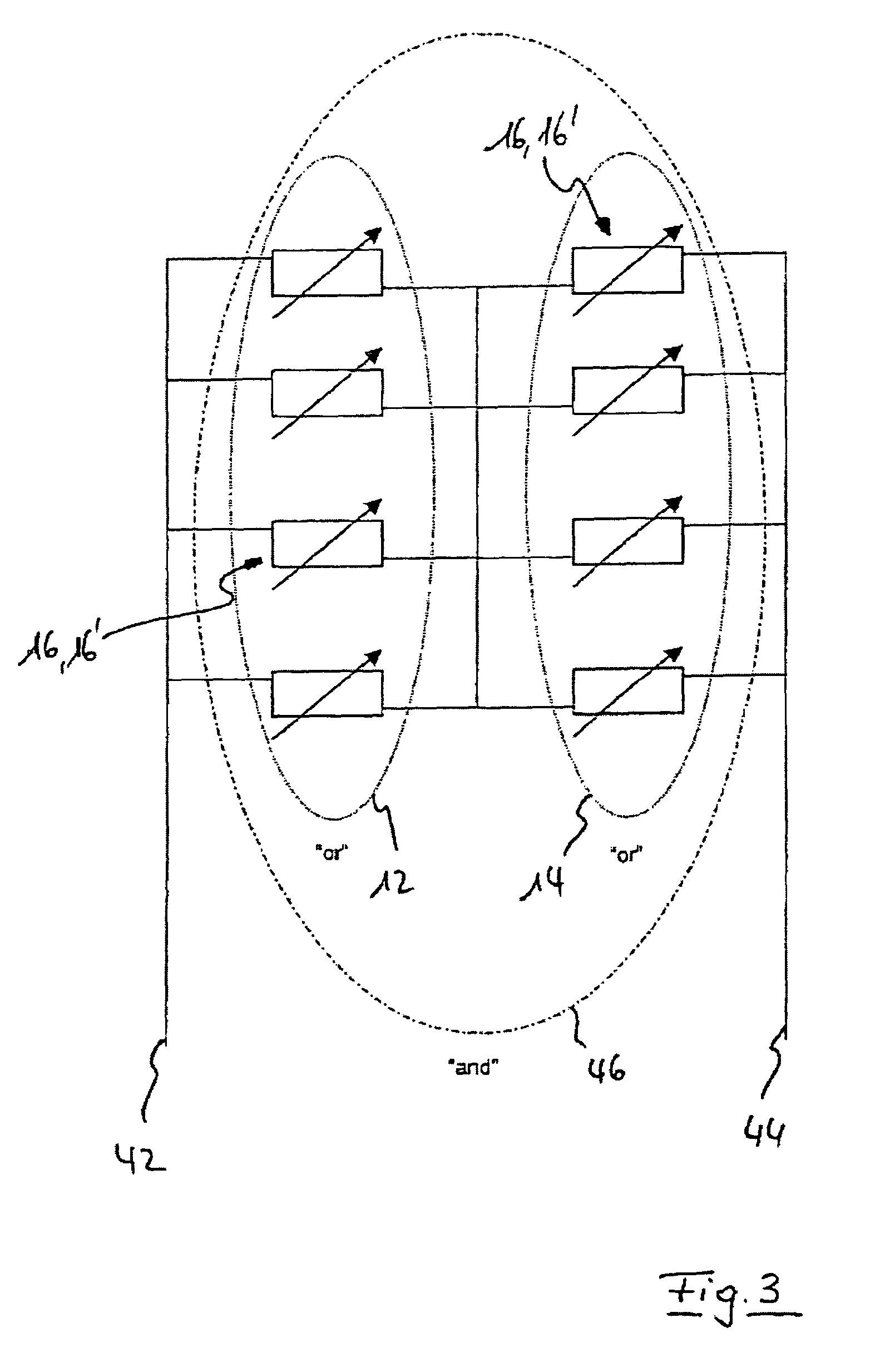Seat occupancy sensor
a seat occupancy and sensor technology, applied in the field of seat occupancy sensors, can solve the problems of the above-mentioned occupancy recognition system being relatively expensive, and achieve the effect of precise classification of seat occupancy detected
- Summary
- Abstract
- Description
- Claims
- Application Information
AI Technical Summary
Benefits of technology
Problems solved by technology
Method used
Image
Examples
Embodiment Construction
[0027]A first embodiment of a seat occupancy sensor 10 is shown in cross-section in FIG. 1. This is an embodiment using foil-type pressure sensors in what is called “through-mode”.
[0028]The seat occupancy sensor 10 shown comprises a first switch element 12 and a second switch element 14, each comprising a plurality of individual sensor cells 16.
[0029]Each sensor cell 16 comprises a first electrode 18 arranged on a first supporting foil 20 and a second electrode 22 arranged on a second supporting foil 24. The two supporting foils 20 and 24 are arranged by means of a spacer 28 provided with a recess 26 in such a way that the first electrode 18 and the second electrode 22 of each sensor cell 16 are positioned opposite each other and with a certain distance between them inside one of the recesses 26.
[0030]A layer 30 of some pressure-sensitive material, e.g. a suitable semi-conductive material, is applied in each sensor cell 16 to one of the electrodes, as it might be electrode 22, so th...
PUM
 Login to View More
Login to View More Abstract
Description
Claims
Application Information
 Login to View More
Login to View More - R&D
- Intellectual Property
- Life Sciences
- Materials
- Tech Scout
- Unparalleled Data Quality
- Higher Quality Content
- 60% Fewer Hallucinations
Browse by: Latest US Patents, China's latest patents, Technical Efficacy Thesaurus, Application Domain, Technology Topic, Popular Technical Reports.
© 2025 PatSnap. All rights reserved.Legal|Privacy policy|Modern Slavery Act Transparency Statement|Sitemap|About US| Contact US: help@patsnap.com



